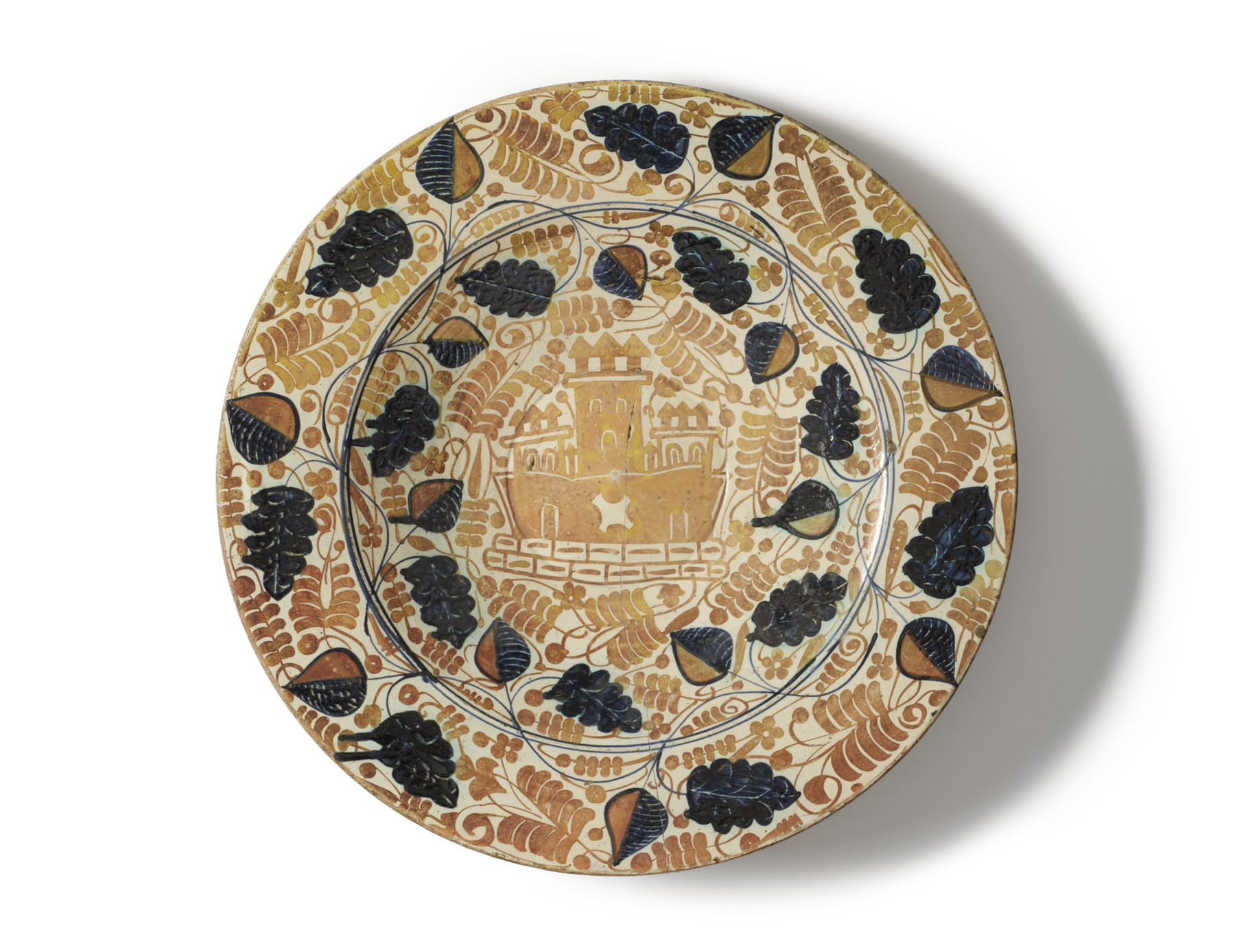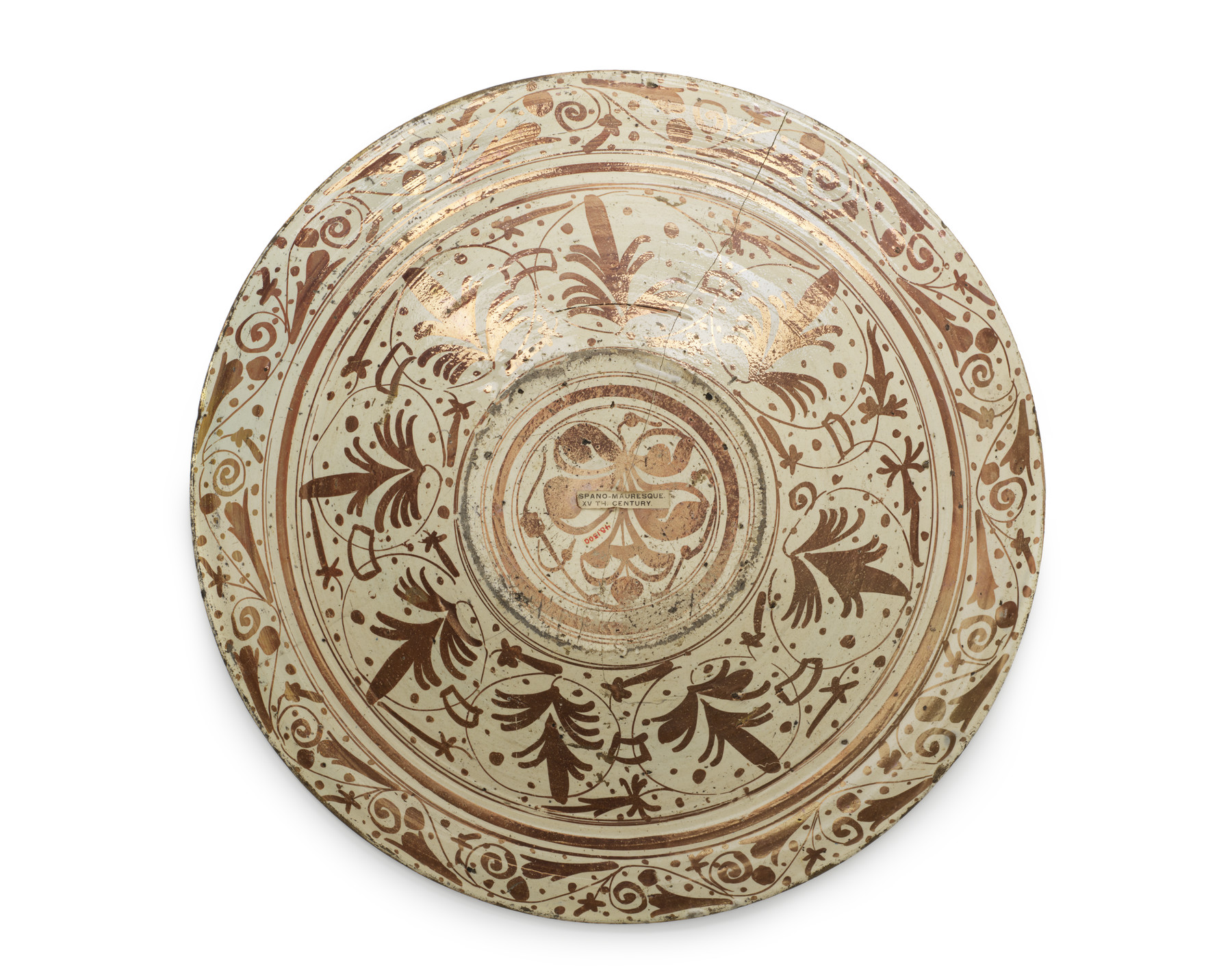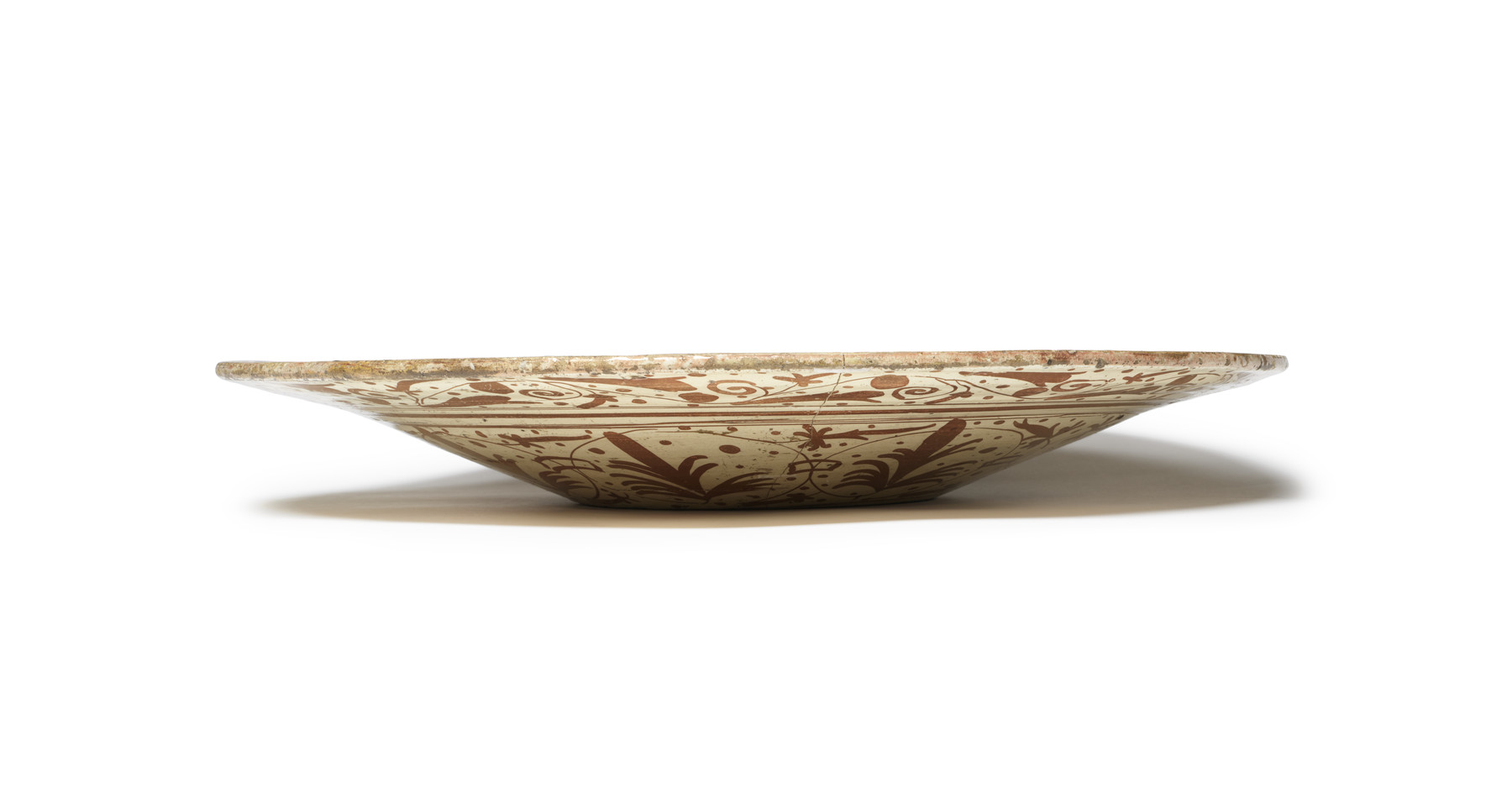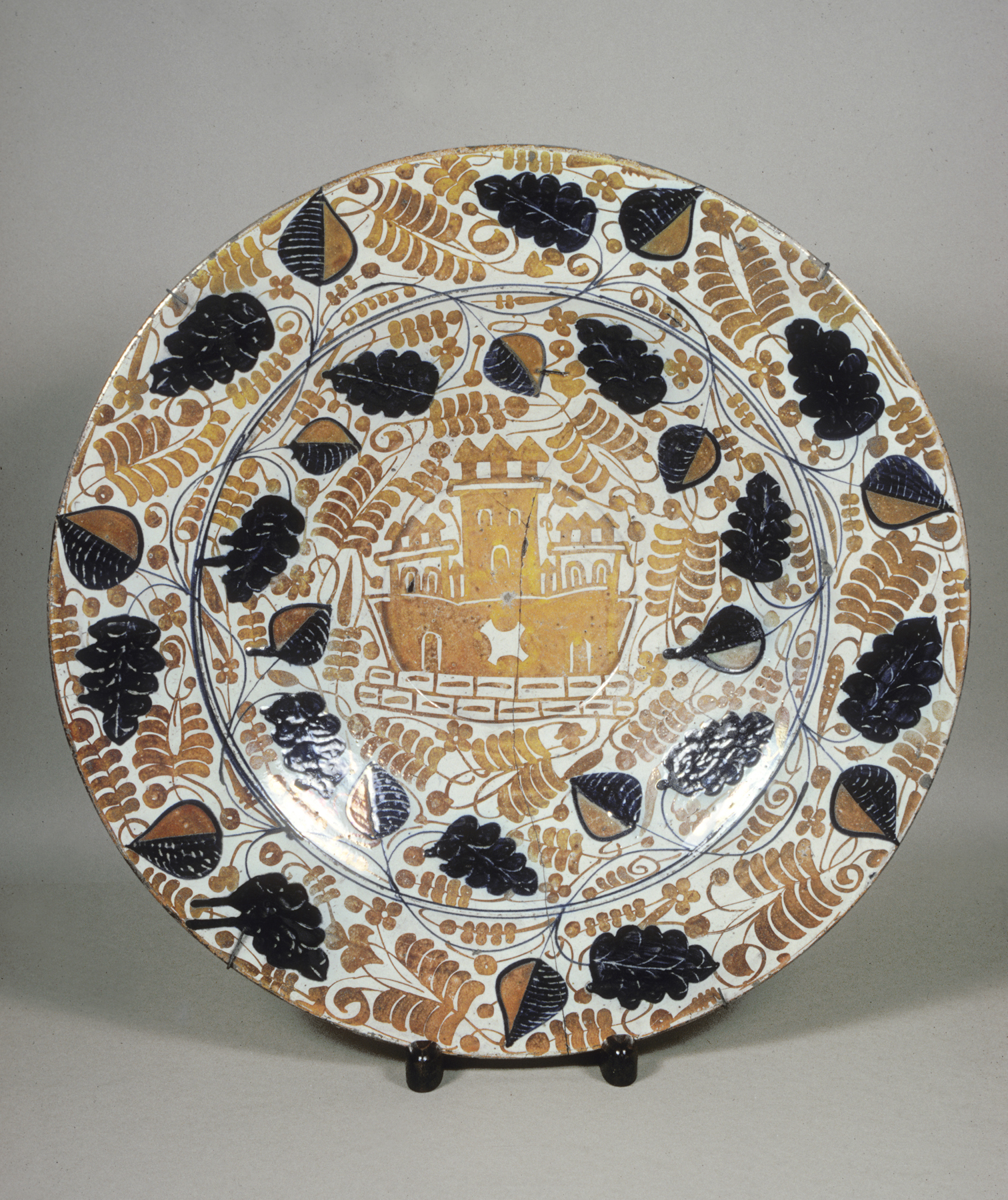Plate with a Castle
This plate probably served more a decorative than a practical function. The art of creating earthenware with a metallic sheen was developed by Islamic craftsmen in the 9th century. It was introduced into Spain with the Islamic conquest, one important center of production being Valencia. Often called Hispano-Moresque ware (due to being made by Islamic craftsmen in southern Spain known as Moors), it continued to be produced for local use and export long after the Christian reconquest of Valencia (late 13th century) and Spain as a whole (late 15th century). It was prized in northern Europe, where there was no tradition of decorative lusterware.
Provenance
Provenance (from the French provenir, 'to come from/forth') is the chronology of the ownership, custody, or location of a historical object. Learn more about provenance at the Walters.
Dikran Kelekian, Constantinople, New York, and Paris, [date of acquisition unknown], by purchase; Henry Walters, Baltimore, prior to 1909, by purchase; Walters Art Museum, 1931, by bequest.
Geographies
Spain, Manises (Place of Origin)
Measurements
H: 2 3/16 × Diam: 16 13/16 in. (5.6 × 42.7 cm)
Credit Line
Acquired by Henry Walters, before 1909
Location in Museum
Accession Number
In libraries, galleries, museums, and archives, an accession number is a unique identifier assigned to each object in the collection.
In libraries, galleries, museums, and archives, an accession number is a unique identifier assigned to each object in the collection.
48.1300








